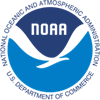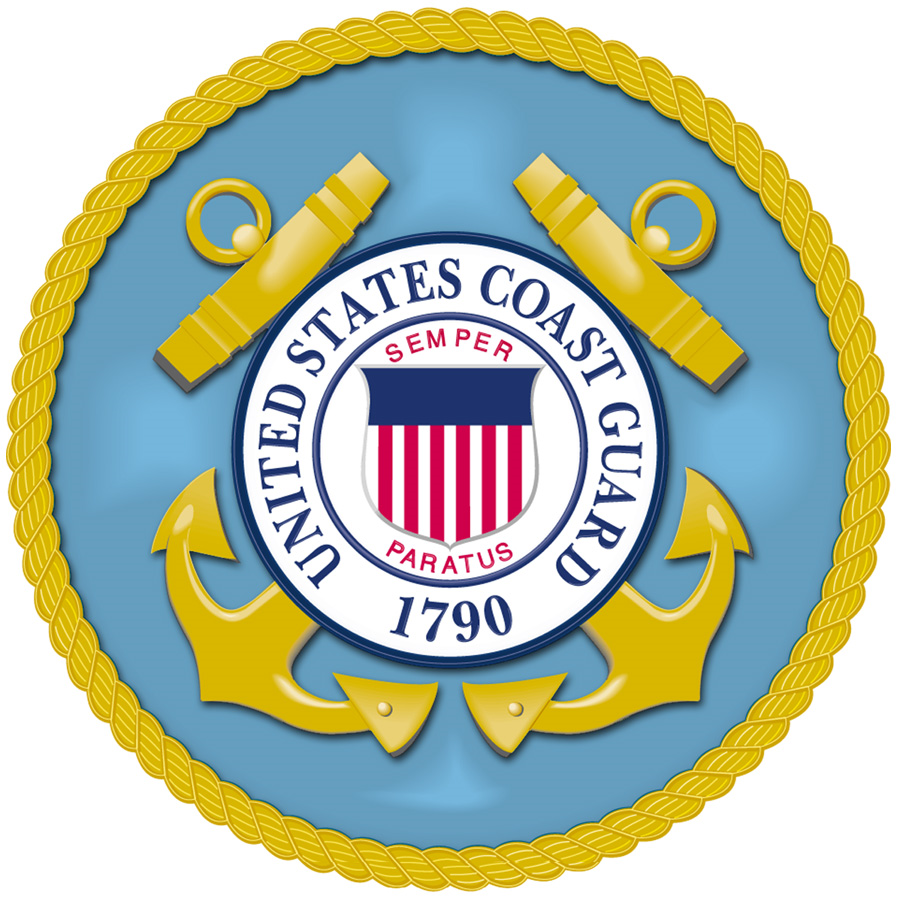 |
ICCOPR Releases FY2014-2015 Biennial
Report to Congress |
June 1, 2016 - Today the Interagency Coordinating Committee on Oil Pollution Research (ICCOPR) released its Biennial Report to Congress on its FY2014 and 2015 activities. The report documents 212 research projects by the member agencies and 378 publications released during the reporting period.
 |
ICCOPR Oil Pollution Research and Technology
Plan FY2015-2021 Released |
Arlington, VA, September 29, 2015— ICCOPR unanimously approved the Oil Pollution Research & Technology Plan (OPRTP) for FY2015-2021 at the committee’s quarterly meeting Sept. 29, 2015 in Arlington, Virginia. This is the first update to the plan since 1997. The purpose of the plan is to provide current assessments of the nation’s oil pollution research needs and priorities. The FY 2015-2021version of the plan includes two parts. Part One explains why oil pollution research is needed and the parties that are involved in research activities. It also presents the committee’s Oil Pollution Research Categorization Framework for tracking research activities and successes. Part Two presents the committee’s research priorities. It also explains the process that the committee used to identify present research gaps and priorities, noteworthy oil spill events, and the current state of oil pollution knowledge. The committee intends to update this plan every six years to reflect advancements in oil pollution technology and changing research needs.
Link to the report: Approved 2015 ICCOPR R&T Plan.pdf
National Petroleum Council Releases
Arctic Potential Report
WASHINGTON, March 27, 2015—Prudently developing U.S. Arctic oil and natural gas resources would enhance America’s position as a global leader in energy production for the next 35 years or more, a new National Petroleum Council (NPC) study concludes. Arctic Potential: Realizing the Promise of U.S. Arctic Oil and Gas Resources, approved today at the 125th meeting of the National Petroleum Council, found that the United States’ large Arctic oil potential, similar in scale to Russia and larger than Canada and Norway, can be safely explored for and developed with the technologies in use today while providing for environmental stewardship. Decades of new production from the Arctic, which holds a significant portion of the world’s undiscovered conventional oil and natural gas, will play an increasingly important role in meeting future global energy needs, the report said.
Link to the report: http://www.npcarcticpotentialreport.org/
 |
Draft Proposed Plan for Offshore Oil and
Gas Development Announced
|
January 27, 2015: The Department of the Interior and Bureau of Ocean Energy Management announced the Draft Proposed Plan for Offshore Oil and Gas Development on the Outer Continental Shelf. The Draft Proposed Plan (DPP) includes 14 potential lease sales in eight planning areas – 10 sales in the Gulf of Mexico, three off the coast of Alaska, and one in a portion of the Mid- and South Atlantic.
The Draft Proposed Program and the Notice of Intent to Develop a Draft Environmental Impact Statement will be available for public comment for 60 days following the publication of the documents in the Federal Register.
Links for more information: http://www.doi.gov/news/pressreleases/interior-department-announces-draft-strategy-for-offshore-oil-and-gas-leasing.cfm
 |
EPA Proposal Strengthens Nation’s Preparedness
Level and Response to Oil Spills |
January 13, 2015 - The U.S. Environmental Protection Agency (EPA) is proposing to amend Subpart J requirements under the National Oil and Hazardous Substances Pollution Contingency Plan (NCP) to improve the nation’s ability to plan for and respond to oil spills. This proposal addresses issues raised by the public, responders, government, and industry officials during the 2010 Deepwater Horizon Oil Spill.
The agency will accept public comments on the proposal for 90 days following publication in the Federal Register, which occurred on January 23, 2015.
Details about the proposed amendments are available at: http://www2.epa.gov/emergency-response/national-contingency-plan-subpart-j
 |
NOAA RESTORE Act Science Program
Announces Funding Opportunities |
December 17, 2014 - The NOAA RESTORE Act Science Program released its first federal funding opportunity (FFO-2015) this morning. The program is seeking proposals that will produce timely and high-quality scientific results that may be used to develop management strategies to support the sustainability of the Gulf of Mexico ecosystem, including its fisheries. The projects supported by this opportunity will synthesize current scientific understanding and management needs and inform the future direction of the NOAA RESTORE Act Science Program as well as other science and restoration initiatives in the Gulf of Mexico region.
Link: http://www.grants.gov/web/grants/view-opportunity.html?oppId=270568
 |
Coast Guard Research and Development Center Releases
BAA for Mitigation of Oil in the Water Column |
The CG Research and Development Center has released Solicitation HSCG32-14-R-R00021 for Mitigation of Oil in the Water Column. The Gap Statement from this BAA is as follows: The USCG lacks a reliable technology, technique or strategy that can remove submerged oil or mitigate the adverse impact of any type of oil submerged in the water column of fast moving waters located in riverine or near shore environments in depths up to two hundred (200) feet. With a goal of advancing the state of technology, the USCG seeks solutions that can remove submerged oil or mitigate its impact on the surrounding environment and manmade structures using in-situ approaches.
This BAA can be viewed at https://www.fbo.gov/
 |
EPA Requests Comments on Risk Assessment Forum White Paper |
August 12, 2014: EPA announced in the Federal Register the availability of “Risk Assessment Forum White Paper: Probabilistic Risk Assessment Methods and Case Studies” and its companion document, “Probabilistic Risk Assessment to Inform Decision Making: Frequently Asked Questions” (79 FR 47105). The drafts were released for public comment, and externally peer reviewed by experts from academia, industry, environmental groups, and other government agencies.
The goal of these publications is not only to describe potential and actual uses of these tools, but also to encourage their further implementation in human, ecological and environmental risk analysis and related decision making. The enhanced use of probabilistic analyses to characterize uncertainty in assessments will not only be responsive to external scientific advice (e.g., recommendations from the National Research Council) on how to further advance risk assessment science, but also will help to address specific challenges faced by managers and increase the confidence in the underlying analysis used to support Agency decisions.
Link: http://epa.gov/raf/prawhitepaper/index.htm
 |
The National Research Council releases final “Responding to
Oil Spills in U.S. Arctic Marine Environment” report |
August 4, 2014: The NRC released the final report “Responding to Oil Spills in the U.S. Arctic Marine Environment” that reviews the current state of the science regarding oil spill response and environmental assessment in the Arctic region north of the Bering Strait, with emphasis on the potential impacts in U.S. waters. This report describes the unique ecosystems and environment of the Arctic and makes recommendations to provide an effective response effort in these challenging conditions. According to the report, a full range of proven oil spill response technologies is needed in order to minimize the impacts on people and sensitive ecosystems. This report identifies key oil spill research priorities, critical data and monitoring needs, mitigation strategies, and important operational and logistical issues. The report is available through the National Academies Press.
Report Link: http://www.nap.edu/...Responding+to+Oil+Spills...
 |
CSB Report on the Macondo Well Blowout |
Houston, Texas, June 5, 2014 - The blowout preventer (BOP) that was intended to shut off the flow of high-pressure oil and gas from the Macondo well in the Gulf of Mexico during the disaster on the Deepwater Horizon drilling rig on April 20, 2010, failed to seal the well because drill pipe buckled for reasons the offshore drilling industry remains largely unaware of, according to a new two-volume draft investigation report released today by the U.S. Chemical Safety Board (CSB).
 |
Response to Marine Oil Spills Film Series Available Online |
May 8, 2014: The International Tanker Owners Pollution Federation (ITOPF) has released the first three films of their “Response to Marine Oil Spills Film Series.” Films 1 and 2, Introduction to Oil Spills and Aerial Surveillance, were launched at a reception in London last week. The third film, At-Sea Response, had its premiere at the Film Festival at International Oil Spill Conference in Savannah on Wednesday May 7, 2014. The films won 1st, 2nd, and 3rd place at the International Oil Spill Conference (IOSC) film festival in Savannah, Georgia. The seven 20-minute films are designed to promote good practice and raise awareness of some of the issues involved in oil spill response. They incorporate footage shot on location at oil spills worldwide since 2007, combined with interviews and archive film from the major incidents of the last 45 years.
Download Plug-Ins:
Some of the links on this page require a plug-in to view them. Links to the plug-ins are available below.
 Adobe Acrobat Reader
Adobe Acrobat Reader
Last Modified: 8/28/2017